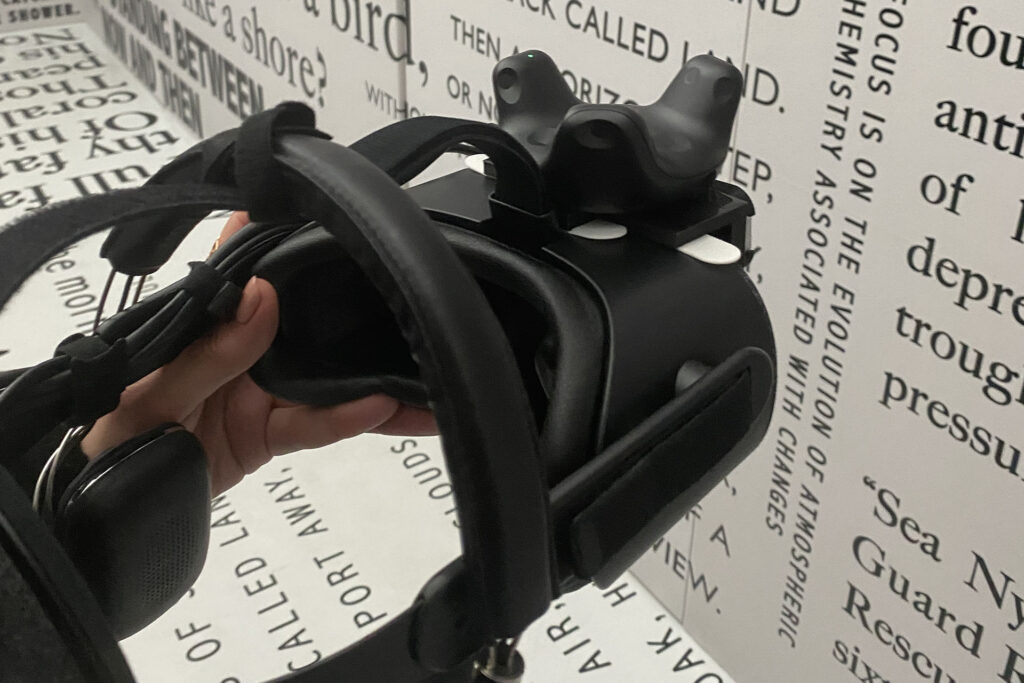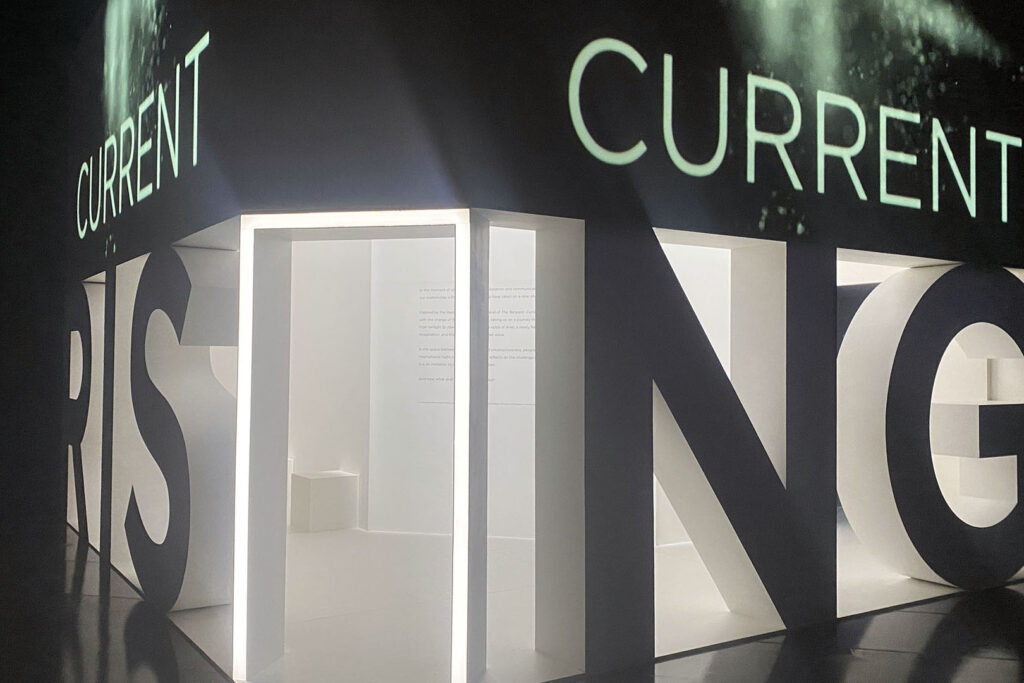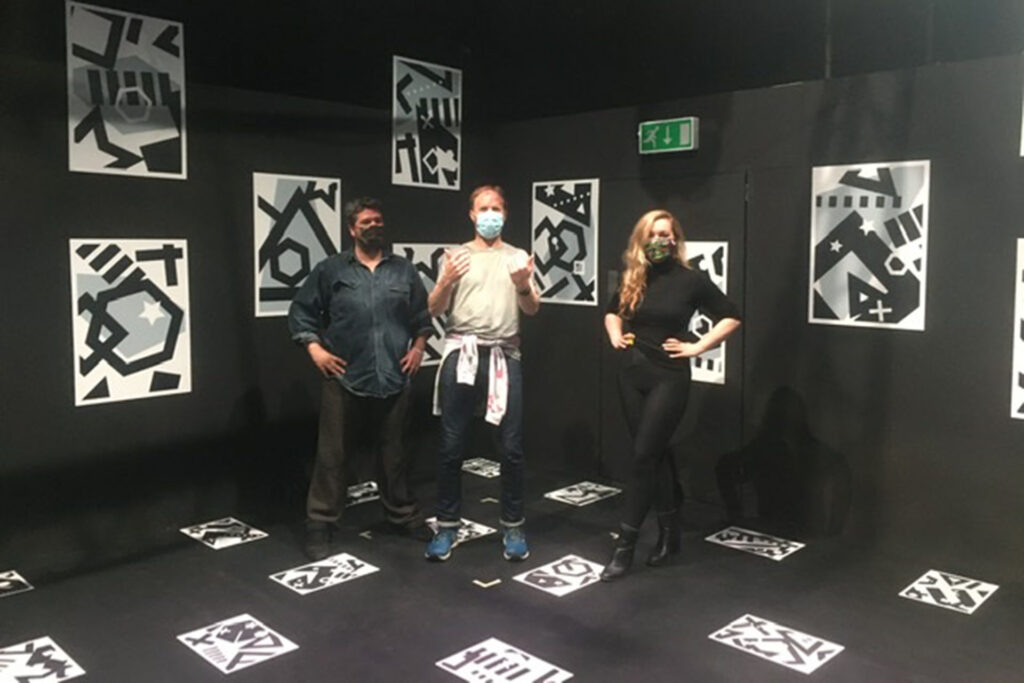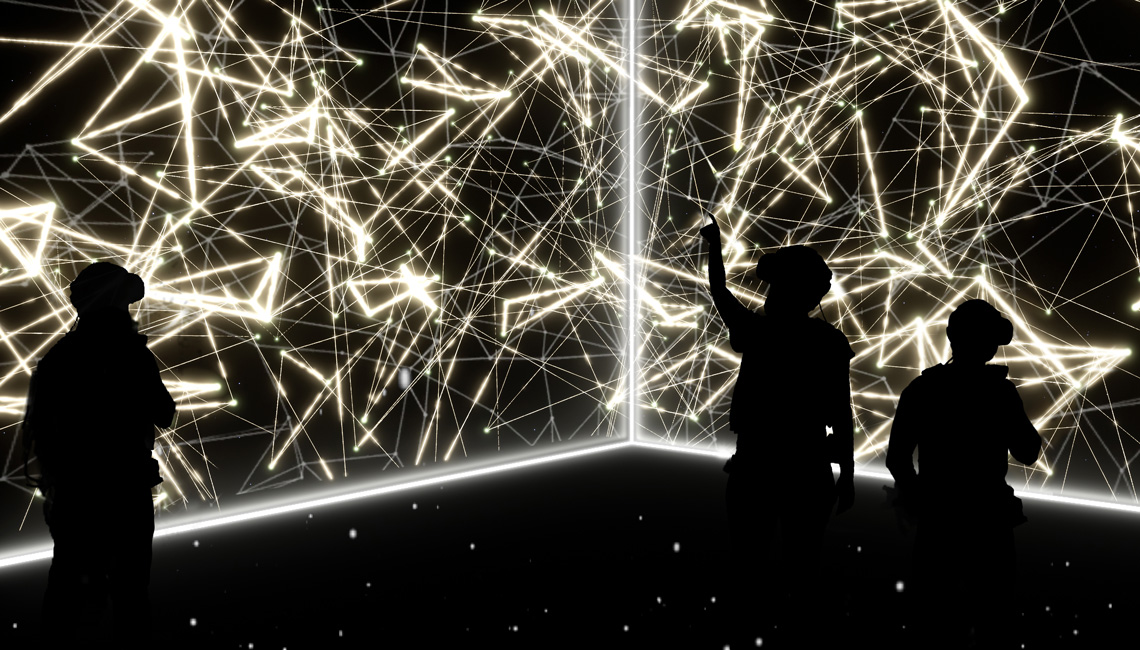HAVE YOU EVER been to the opera? No, nor have most people: 96% of people in the UK, for instance, don’t bother. It’s typically seen as too elitist. But, as recipients of funding, the Royal Opera House, in London’s Covent Garden, is often seeking ways to entice more people in.
With their latest foray, an exceptionally engaging and fun virtual reality (VR) experience, they may have found a way to get some of the 96% to give it a try.
[UPDATE: to discover the process that the Royal Opera House and tech firm Figment Productions went through, and how you could apply the same process to create success by combining difference experience sectors, visit Campfire 23: How To Bring Different Worlds Together.]
I’ve been to see opera a few times, at places like the Royal Opera House, the English National Opera, and under a big tent at Opera Holland Park. I’m usually somewhere between baffled and engrossed by all the high drama as the actors and actresses act out the high stakes — unrequited love is a typical theme — and then, for me, there’s a turning point inside. As the singing and the music carries the drama to its inevitable crescendos, suddenly I’m enrapt, and washed away on a wave of emotion. Tears suddenly stream down my face -not because it’s necessarily sad, I don’t know why. I think it’s the power of music, the singing. Whatever it is, it’s a surreal, cathartic, and hugely enjoyable experience.
Much though I marvel at VR experiences, I’ve never had anything like that sort of experience. Also I’d recently been very excited about the RSC’s experimental work, Puck, but had come away from that very disappointed. (In private and off-record, many have said the same. They quickly cite the extenuating circumstances of covid and point out that it was just a research project.)
So when I went to the Royal Opera House to see Current Rising, I was curious and skeptical.
Current Rising is the result of a huge amount of work by many people, of course. The work was led by Royal Opera House’s Head of Audience Labs Annette Mees — who is also a member of the WXO’s Founding Circle.
I went with two other WXO Co-Founders, immersive festival director Martin Coat and experiential marketing pioneer Meredith O’Shaughnessy.
Let’s start at the beginning.
(From here on in: spoiler alert. If you’re in or can get to London in the next week, stop reading and book one of their remaining slots.)
Through the doors, away from the noise and bustle of London streets emerging from lockdown, and into the refined, modern atmosphere of the Royal Opera House. We are ushered downstairs, and put our belongings in lockers.
A nice touch this, reminds me of the ‘switch off your phones’ reminder at the cinema, or the actual lockers at Secret Cinema. The ‘cross the threshold’ signal is clear: leave your things and the world behind, you are about to enter an adventure.
Actually, the cross the threshold moments keep coming. We walk down circular stairs, with each pass we have a view of the words ‘CURRENT RISING’ emblazoned in 3D form below. It’s a good use of anticipation, as we go deeper. At the centre of CURRENT RISING is another threshold: a glowing white rectangle of a doorway.
The part where we meet the kit

We go through, are greeted by our guide, who walks us in to a small ante-room, and talks us through the kit. There are four of us (there’s also a chap from the National Theatre) and there are four pegs. Each holds a VR headset, with goggles and headphones, and a backpack to hold the computer. Apparently they worried this might be annoying, cumbersome. But as we put the kit on, I’m reminded of war films, where, just before battle, the warriors put their battle dress on. It all just feels right: in hero’s journey terms, the guide is our mentor, this kit contains the tools we need for the road of trials.
Now we cross another threshold through a door that, again, is a glowing white rectangle. Inside, another ante-chamber, of sorts. Words in different sizes — fragments of what may be poetry, shipping forecasts, quotes, news — cover the walls. We try our kit, take it off, try it again. It’s very thoughtfully managed. We are told to do what would be normal in real life — so no you’re not allowed to walk through walls or step into the abyss — and that when a doorway appears, we should go through it.
When you put the VR goggles on, the first thing that appears: a precise replica of the room we’re already in.
A great touch, this. All VR should begin this way. Seamlessly connecting where you are with what you are in VR makes the VR feel so much more real. (I first came across this smart touch at the VR experience for Mr Robot at Comic Con a few years ago. Attendees sat on a seat in a replica of Mr Robot’s bedroom, pulled on the headset, and the first VR scene was Mr Robot’s bedroom. Note: if you think there’s another better way to begin a VR experience, I’d love to hear.)
Then, we heard the words, many words being recited, and soon a portal appeared. Yes, like all the other doors, it was a glowing white rectangle. Till now, we’ve all been chattering, excited, but now, we’ve been told we’ll be on our own. This is when the magic begins.
We are in a cube, clear, but for its edges glowing white. Then, a square, about a metre and a half by a metre and a half, its lines in glowing white, appears for me and I stand on it, within the lines. From now on, I don’t see or hear the others. Like opera, this now feels solitary experience. I watch, I’m a bit baffled, I’m utterly absorbed.
The white frame disappears and… all sorts of things happen.
The cube I’m standing on is suddenly the only solid object. I dare not move. All around is water, black water, rippling as wind whips across it. And we feel the wind. (Another neat touch: the more senses the better. See our report on Punchdrunk’s methods for immersion. Consider how Secret Cinema made it rain indoors for their Blade Runner experience.)
But how can I see the water if it’s so dark? Now, from far off, on the distant horizon, I realize there’s a bright, fluctuating glow, like it may be dawn coming, or a nuclear explosion happened, and this is the aftermath.
And then buildings emerge, like a scene from Inception, and there are stone stairs, like from a castle, but gravity seems different here, some stairs are up the right way, some are upside down. Suddenly I’m in an M.C. Escher creation, and there are shadows of people. Perhaps of the singers? There is music — this is opera after all. But it’s not what I’m noticing, it’s not what I remember.
And then the buildings change, and skyscrapers, not modern American skyscrapers, some sort of ever so slightly arty, but very real-feeling skyscrapers, emerge from the depths, and rise and rise. The sense of scale is immense, overwhelming. I gaze up, left, right, all around. I’m surrounded by mega-towers. And over the edge of the block I’m standing on? The scale of the depth is equally imposing, and actually frightening.
The scenes continue, making me feel tiny, alone, buffeted. It’s serious and seriously exciting. I whirl about on my square, looking left, right, up, down and all round. There are lighter moments: at one moment, the scene dissolves into white cubes, flitting, flying around. I feel like cheering, a beaming smile etched on my face. A few times, I spontaneously clapped out of sheer joy.
And then, it was all over. Like all good things, you have to come home. The glowing white rectangle took us back, breathless, across the threshold and into the ante room where it had all begun.
We were lucky to meet the tech people, from Figment, who had created the software. They showed us, without headsets, the room we’d been in, and told us of the process.
Good news: Current Rising will be touring

It was an exceptional, exciting, energising experience. It was perhaps a little strange that it was the visual and kinaesthetic experience that stands out for me. There were no actors or singers that we saw in the production. Perhaps the headphones could be better? Something like the Sony WH-1000X M3s that I use to block out sound and listen to music could encase the person more.
The beginning, with the multiple crossings of the threshold, was brilliantly delivered. I especially liked the repetition of the glowing white rectangular doorway. It’s quite a feat to transport people so far from their daily lives, in such a short time — it only lasts 15 minutes.
After, we went for a debrief in a local bar. Perhaps the Royal Opera House could enhance the ending, by designing time and space to manage the re-crossing of the threshold, and the denouement as elegantly as the beginning. But these areas for improvement are minor details.
There is bad news though: it’s only on for a very short time.
But I’d like to end with the good news. For one thing, this suggests a very positive engaging future for opera. And also, it’s going to be touring. Maybe it’ll turn up in your town?
Thoughts from Meredith O’Shaughnessy

What did you esp like about Current Rising? Which bits did you enjoy / appreciate / think were done well?
I though the whole experience was epic! It’s the first time I’ve really felt immersed in a VR experience.
I didn’t think it was a weird add on to another event – like when they have VR headsets in the corner of a trade show.
The journey down to where the actual “set” was made all the difference. I also think small moments, such as placing our things in the lockers built up a sense of anticipation. Because I didn’t know what to expect the whole journey felt both one of personal discovery and a group outing. We were “in it together” – which is very hard to achieve with VR. The transition spaces were so well done!
As for the actual experience, once we had the headsets on
I genuinely felt transported. I was excited, exhilarated and enthralled. It was so so beautiful – although mildly terrifying at times.
Now I’ve started reading Stephanie Riggs’ “The End of Storytelling” I wish I’d been more brave in the Storyplex – looking around, being bolder.
The whole time I was asking myself “If this is the future, am I ready for it” – and the answer is YES!
Room for improvement?
Honestly it’s hard to say what could be improved. I’m going back again and I have raved about it to all my friends. I guess what I would like to see is the next stage of an experience like this. Can it be further overlaid to the physical realm?
What reminded you of your work?
I’ve been avoiding using VR and digital in my experiences as I always felt that it was a bit disjointed and isolating. I can now see how far we have come and how you can build a moment like this into a larger event or create integrated reality events.
Thoughts from Martin Coat
What did you esp like about Current Rising?
What blew me away was the sheer depth of vision and scope within the environment. There is a moment when you walk through a separate door to everyone else that is in the experience with you and you are made to believe you are now all alone stood on a floating platform in middle of a vast ocean. I felt beautifully immersed in a way I don’t believe I have before in a show.
It felt epic and solely my own one on one experience. Of course in the real world was I stood in a small room with four other people in very close proximity but here I was almost transported to a different dimension where the corners to which this new world reached seemed endless.
Room for improvement?
I guess the only failing I would highlight is I don’t believe any real narrative dropped in on me. I think if I hadn’t of read the blurb on the wall on the way in then I wouldn’t have thought there was one. However, the feeling of bravely adventuring into such a surprisingly dangerous and changeable environment was enough on its own with out feeling I was missing out on following plot points.
What made you think about your work?
For me as an immersive theatrical director, my eyes were widely opened to the true potential of VR … for the first time ever the medium truly excites me.





